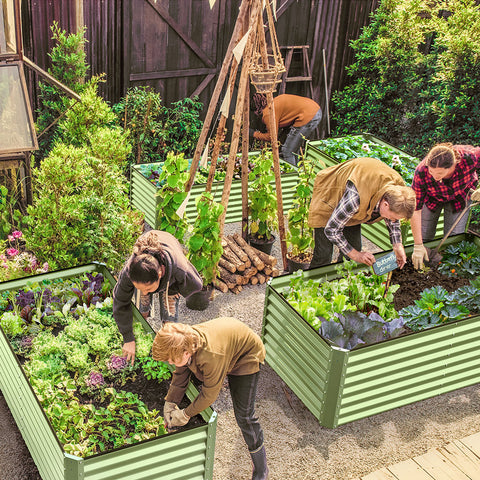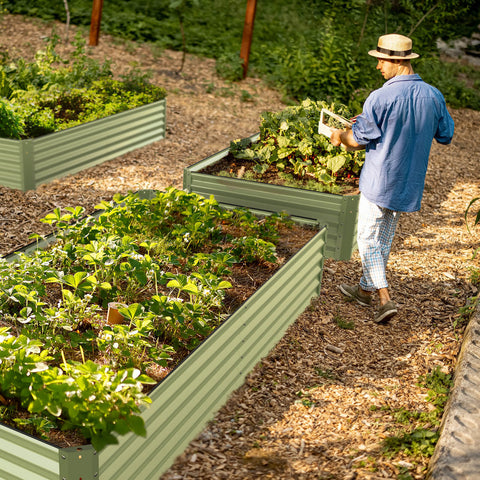We all know that we can grow vegetables in garden beds, which is a great way to get fresh and organic vegetables. Spring is a great time to start growing vegetables, so here are some spring garden bed vegetables and how to grow them.The following content has some reference value for raised garden beds.

1. Lettuce
Lettuce is a very easy vegetable to grow. It grows easily in the spring. Lettuce needs full sun and good drainage, so choose a sunny location and make sure the soil drains well. Remove weeds and stones from the soil, soften the soil with a hoe, and improve the quality of the soil by mixing organic materials (such as decomposed compost or leaf soil). Drop lettuce seeds over the surface of the soil and sow to the depth indicated on the package. Generally, lettuce seeds need to be planted shallow, no deeper than 1/4 inch. Keep the soil moist, but not too wet. Fertilize the bed within two weeks of lettuce germination. After that, fertilize every 2 to 3 weeks to make sure the plants are getting enough nutrients. Keeping garden beds clean and organic requires regular weeding and loosening to promote lettuce growth.
2. Greens
Greens are also easy to grow. They can start growing in early spring. Choose a sunny location and make sure the soil drains well. Remove weeds and stones from the soil, soften the soil with a hoe, and improve the soil by mixing organic materials (such as decomposed compost or leaf soil). Drop the vegetable seeds over the surface of the soil and sow to the depth indicated on the package. Generally, vegetable seeds need to be planted shallow, no deeper than a quarter of an inch. Fertilize the bed for two weeks after the greens sprout. After that, fertilize every 2 to 3 weeks to make sure the plants are getting enough nutrients. Keeping garden beds clean and organic requires regular weeding and loosening to promote the growth of greens.
It is important to note that green vegetable seeds need to germinate at higher temperatures, usually requiring soil temperatures of around 10-20°C to germinate. If the temperature is too low, use a greenhouse or mulch to keep warm and promote the growth of greens.

3: Spinach
Spinach is a very healthy vegetable. It is also one of the vegetables that can grow in spring. Choose a place full of sunlight and ensure that the soil is well drained. Remove weeds and stones from the soil, loosen the soil with a hoe, and mix organic matter (such as decomposed compost or rotting soil) to improve the soil quality. Sprinkle spinach seeds on the surface of the soil, and sow at the depth indicated on the package. Generally speaking, spinach seeds need to be planted shallowly, not deeper than 1/2 inch. Within two weeks after spinach germination, fertilize in bed. After that, fertilizer should be applied every 2 to 3 weeks to ensure that the plants get enough nutrients. Weed and loosen the soil regularly to promote the growth of spinach. Spinach is easy to be attacked by diseases and pests, so attention should be paid to prevention and control. Natural control methods can be used, and appropriate pesticides or fungicides can also be used.
It is important to note that spinach needs to be kept at the right temperature and humidity during the growing process, and the suitable growing temperature is 5-25°C. If the temperature gets too cold, use a greenhouse or mulch to keep the spinach warm and promote its growth. At the same time, spinach is prone to the accumulation of carotene and nitrate, so multiple harvesting and reducing fertilization can be used to reduce the content of these substances.









